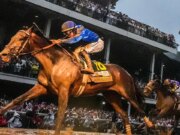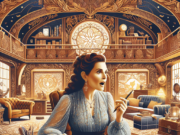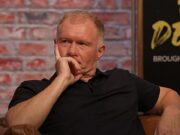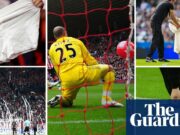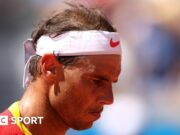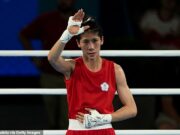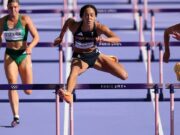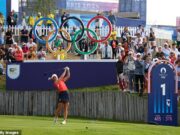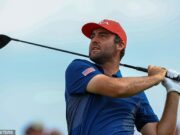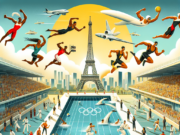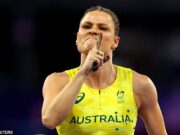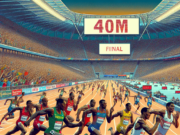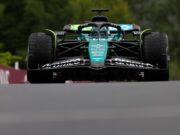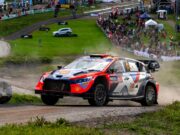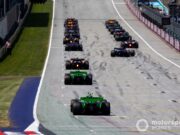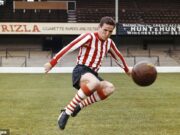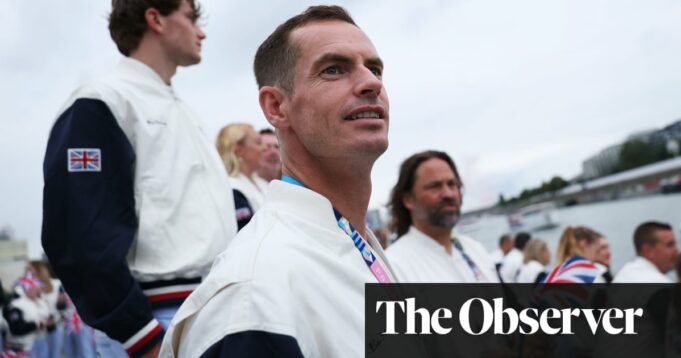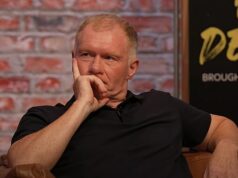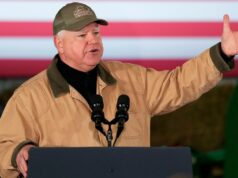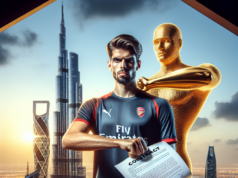Throughout the last two decades, Andy Murray has crafted one of the most remarkable tennis careers. As he gears up to retire from the sport at the Paris Olympics, those who are close to him look back on the early phases of his journey and his impact on the game.
Jamie Murray, Andy’s older brother and a former doubles No. 1 At our local tennis club, we were probably the youngest participants. We often mixed with the older players. Our mother was the club coach back then and had numerous junior players. They weren’t all exceptional, but the club was vibrant. The atmosphere was fantastic, and I think that’s where our love for the game was nurtured.
Leon Smith, Murray’s childhood coach and now head of men’s tennis at the LTA I first noticed him while participating in junior tournaments where Judy [his mother] would take him along. He was around four or five. I distinctly remember him playing short tennis; he was extraordinarily skilled and coordinated. By the age of 11 or 12, he was already impressive. The standout feature was his dedication to playing tennis and football several times a week, but once you put him on a match court, he just came alive. He hated losing. In the Orange Bowl final [an event in Florida that Murray won in 1999], I remember him utilizing drop shots against a much larger opponent – Andy was more average to slightly smaller in stature – simply because he knew he couldn’t match him in raw power.
Jamie Baker, Murray’s longtime friend and junior rival I’ve never encountered anyone who picks things up as quickly as he does; every time he struck a ball, he learned something new from it. He was so engaged in the moment and in tune with the ball and the game of tennis that he never wasted a second. This is why, during his junior years, his playing style evolved rapidly. There was a phase when he would just moonball every shot, and then suddenly, the next time you faced him, he was drop-shotting you with every hit. That’s extraordinary.
Jamie Murray We’re fairly close in age, but when we were younger, I probably excelled at most things. However, that quickly shifted in tennis [laughs]. I had a brother I aimed to surpass, and that competitive spirit between us drove us both to improve. Given that there wasn’t much competition in Scotland, a lot of that motivation came from our household.
Ara Harutyunyan, Murray’s roommate and friend at the Sánchez-Casal academy in Barcelona He was a remarkably humble individual, completely unpretentious. He never saw himself as a star. His upbringing and conduct provided a great foundation for his character. However, people sometimes misinterpret him as being grumpy, particularly because of his mannerisms. But that’s just who he is. I truly admired him.
Baker I find it hard to believe anyone could’ve predicted Andy would reach such heights when he was just 12 or 13 years old. He was always a standout, never just part of the crowd, in whatever he pursued. Whether in tennis or in life, he never followed the crowd. He was intensely competitive, almost in an abnormal way, and that was always evident.
Harutyunyan His competitiveness was immense, and he was always eager for fairness. He constantly questioned, asking, “Why are you saying this?” “Why?” was his perpetual query. He hasn’t changed, and if you watch him on TV, you still see the same Andy.
Baker His work ethic and professional attitude that is attributed to him now were not as evident during his early years. Back then, he wasn’t necessarily the one who followed routines or behaved like the most disciplined player.
Harutyunyan Every day, we all indulged in a jar of Nutella. He was incredibly thin, and our training was so intense that it barely affected his physique.
Baker I can’t pinpoint exactly when it happened, but there was a moment when he made a choice to fully commit to tennis. Almost overnight, he transformed into the professional we recognize today, meticulously monitoring every detail of his performance, including his diet and sleep. This transformation equipped him with the tools to secure two Wimbledon titles, a US Open, and an Olympic gold medal. Remarkably, this change wasn’t innate; it was a deliberate decision that he made, and the rest is, as they say, history.
after newsletter promotion
Since then, Murray has achieved three Grand Slam titles, – two of which were secured on his home turf at Wimbledon, – along with two Olympic gold medals, and enjoyed a considerable tenure at No. 1, all while competing against three of the sport’s all-time greats: Novak Djokovic, Rafael Nadal, and Roger Federer.
Rafael Nadal, 22-time Grand Slam champion and Murray’s former rival Andy had an extraordinary career. He reached numerous finals. He was a phenomenal player who played during a challenging era in tennis, where he was up against the prime versions of Novak, Roger, and myself. In my opinion, he was consistently at our level, even if he didn’t win as much. In terms of tennis quality and maintaining the mental fortitude required to win week after week, he was distinctly close to our level.
Smith If you look beyond just the Grand Slam titles and delve into his overall tour record, it’s clear that he belongs in the conversation of the big four. His achievements are incredibly impressive. What I find admirable about Andy is his honesty regarding his game: “I don’t possess the power or certain skills that Roger, Rafa, and Novak have.” He always recognized that and sought to enhance his tactical game. While he might not wield a powerful serve, he worked rigorously on his physical fitness to ensure he was robust enough for the competition. He literally drove himself to near exhaustion that year to maintain his No. 1 ranking, playing every week while also competing in the Davis Cup and at the Olympics. The commitment he made that year was astonishing.
Baker Without the emotional aspect, he undoubtedly ranks among the legends of the game based on his achievements alone. The formidable presence of the other three shouldn’t in any way overshadow his accomplishments. It’s just an extraordinary career.
Harutyunyan [His remarkable comeback after hip surgery] stands out as an even greater achievement than his feats when he was fully fit to compete in tennis. From what I understood, the surgery aimed to improve his quality of life; however, upon recovery, he declared, “No, I’m going to return to the court.” Just imagine the rigors of the recovery phase! It was incredibly challenging for him to play at such a high level after hip surgery. This comeback is perhaps even more commendable than his past victories – he may not view it that way, considering his prior success, but it’s truly remarkable.
Smith Above all, he should be celebrated as a great champion and a powerful role model. He isn’t afraid to speak out on global issues, which is rare among athletes. He addresses matters of significance, and people listen to him. Players hold him in high regard; there isn’t a single individual who doesn’t speak highly of him. His contributions to the sport and to individuals in it are deeply appreciated. He should be remembered for many virtues: a wonderful person, an outstanding champion, and an ambassador for tennis as well as broader societal issues.
Baker Growing up alongside him was almost – I hesitate to use this term – but it was almost like a fairytale, to think that this eight-year-old kid would one day lift the Wimbledon trophy.

